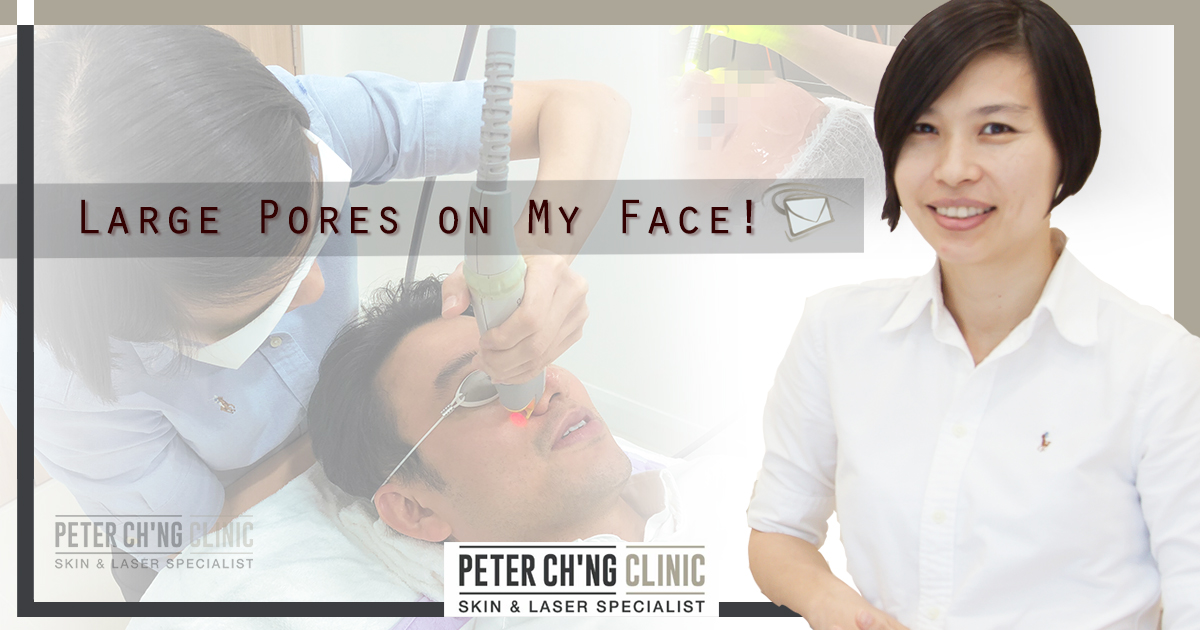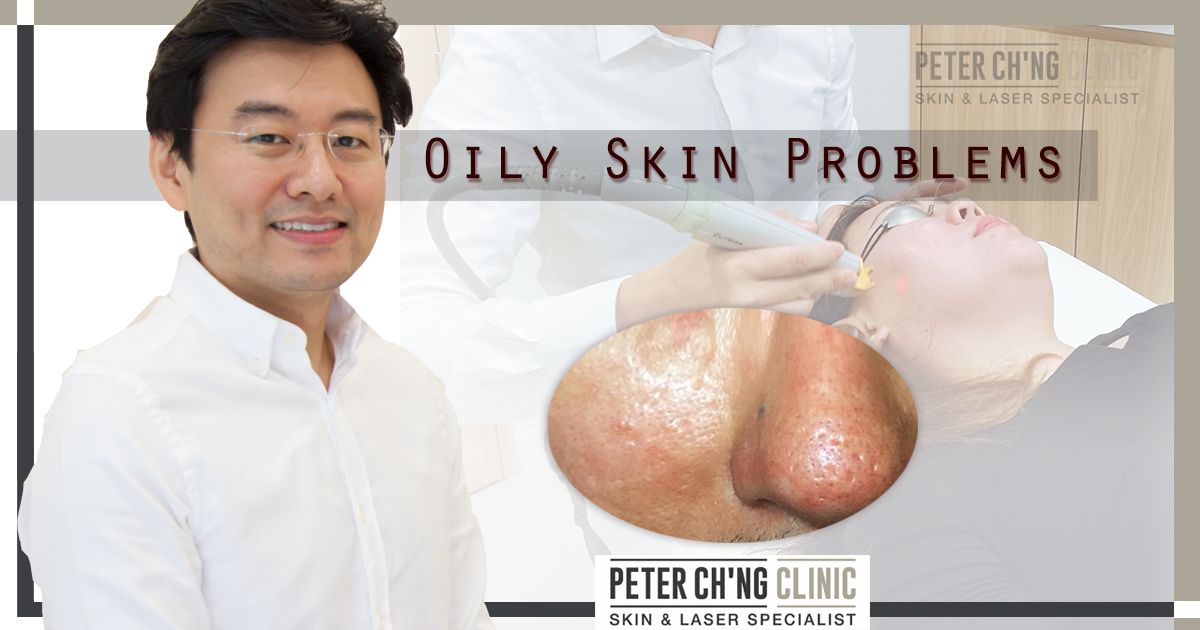Patient Mailbox: My 24 Hour Oily Face and Shiny Forehead
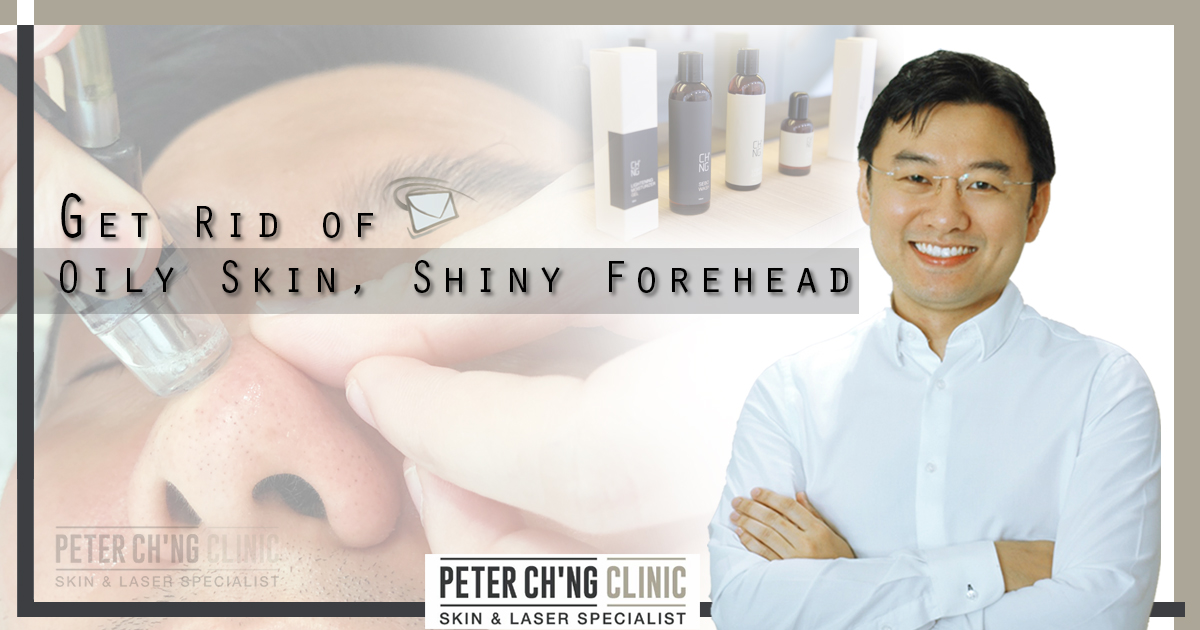
Hello there! How are you doing?
I’m Dr Peter Ch’ng and here’s Episode 14 of our Patient Mailbox series. We collect handpicked questions submitted by patients suffering from various skin diseases and condition, and personally answer them with our best efforts. I hope to help any one of you who face challenges from similar situations.
Editor’s Note: Dr Peter Ch’ng is a Consultant Dermatologist actively involved in numerous talks and workshops, and is an esteemed contributor to dermatology research and publishing internationally. He practices at both Peter Ch'ng Clinic Skin & Laser Specialist in Desa Park City and Gleneagles Hospital Kuala Lumpur.
QUESTION:
Hi Dr Peter,
I’m Kee, 28 this year. During my job, I travel around to meet clients and speak to people, but I have a very, very annoying problem – my face is so oily that it shines!
Because of this, I wash my face up to 5 times a day even when I’m outdoors, just to get rid of the oil and keep my face dry and comfortable with these excess sebum.
And even after I have washed my face thoroughly, the shine is back after an hour! I have also tried many different facial cleansers that claim to be formulated for oily skin, but nothing has changed to my skin so far.
I’m not sure if they are interconnected, but my oily skin also comes with large pores, blackheads, and frequent acne formation on my skin. The most useful item I have so far is the blotting papers, that I use to wipe off the oil, but this only helps temporarily and is quite troublesome.
It also doesn’t help that I’m always outdoors in our country’s hot and humid weather, making my skin even oilier.
What, actually, is the cause of my oily skin? How can I solve this problem?
ANSWER:
Oily skin is a very common problem. Many people have dry skin, some have sensitive skin, and there are also many people with oily skin.
What, actually, is the cause of my oily skin?
The main factor of our oily skin is due to the sebaceous glands under our skin, which are what I call the oil factories under our skin. These glands are the ones that produce the oil, or sebum, that appear on our face and make it look shiny.
Where do we normally find these sebaceous glands? Mainly on our face, and also on our chest and upper back, but not at our palms of our hands or on the sole of our feet. That is why we don’t find any acne on our palms and soles.
Why do I have oily skin when my friend doesn’t?
Some people have more oil on their face while some have less. This is because the characteristics of our skin, including how active our sebaceous glands (our oil factories) are, are determined by genetics.
Hormones also play a big role in our skin’s oil production. This explains it is very common for us to find our skin very oily during our teenage years.
As we get older, the oil factories in our skin produce less oil, so our skin gets drier as we age, which leads to other skin conditions like wrinkles and fine lines.
Is acne related to oily skin?

Did you know that one of the main reasons of acne is the oiliness of our skin?
Sebum, or oil, is trapped in our pores. And when the oil gets oxidised along with the pores, they become blackpores, and if not, they turn into white pores. Recurrent black and white pores also cause enlarged pores on our skin.
Besides, when the oil that is trapped in our pores gets in contact with bacteria, this is where those big red inflammatory acne appear.
How can I solve this problem?

Cleansing
Treating oily skin starts with your self care for your skin at home – cleansing your facial skin. What type of product to use? For cleansing oily skin, choose facial cleanser products that contains salicylic acid. This is because salicylic acid is lipophilic, which means that it is attracted to oil. So during the cleaning process, the your clansing can help to clean and reduce the oil on your skin.
Oral Treatment
There is an oral medication, isotretinoin, that can help with reducing oiliness on the skin, but this medication can only be prescribed by a verified skin specialist.
There have been recent news from the Ministry of Health Malaysia that some parties have been illegally selling these medications online and physically by non-skin specialist doctors.
This is not legal and is dangerous, because these oral medications may not be suitable for everyone. For example, if a patient takes isotretinoin and gets pregnant, there may be a risk of side effects like baby deformities for the pregnancy. However, if the patient has stopped the medications and gets pregnant only one menstrual cycle after, there would be no such effects.
As a skin specialist, I always insist that we as specialist doctors should know and understand our patients’ condition well, before prescribing any medication based on the condition of the patient to avoid any potential side effects of contraindications.
It is always a safe option to get your skin condition checked by a verified skin specialist doctor. Get yourself checked by Dr Peter here, just call us at +6011-22882299, WhatsApp us here, or book an appointment with Dr Peter here!
Physical Treatment – Microdermabrasion
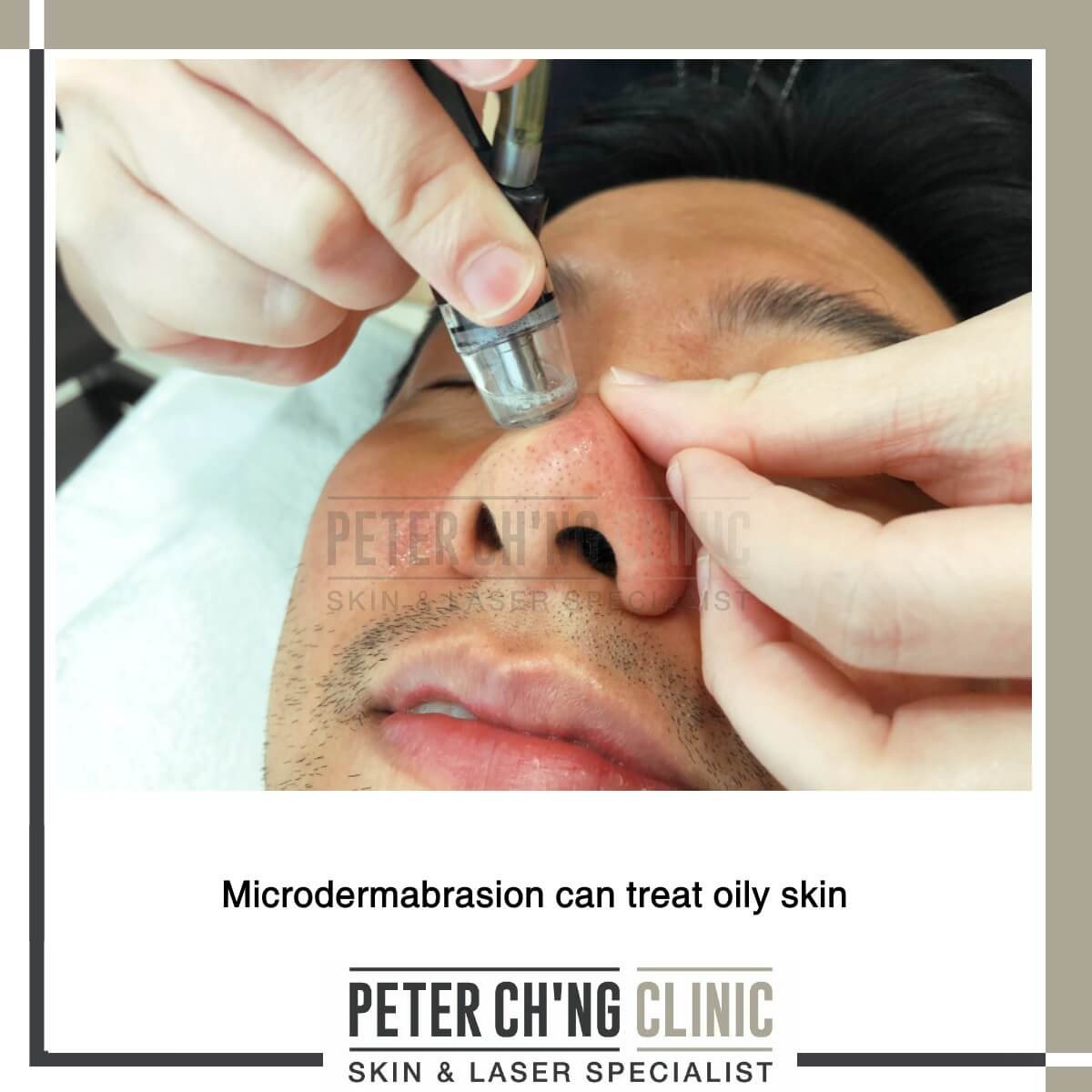
There is also the option of physical treatments to help treat oily skin using proper skin treatment methods.
One effective method is a modified microdermabrasion which focuses on treating oily skin.
In microdermabrasion, the handpiece used in the treatment is like a pen, and the tip is made from diamond.
This diamond slowly and gently scrapes off the dead skin, and at the same time, a vacuum is used to suck out this dead skin.
A few chemical ingredients is infused inside the skin, including hyaluronic acid for skin hydration and salicylic acid to remove the oil on the skin. This whole process helps in removing acne and oil on the face quickly.
Physical Treatment – Laser
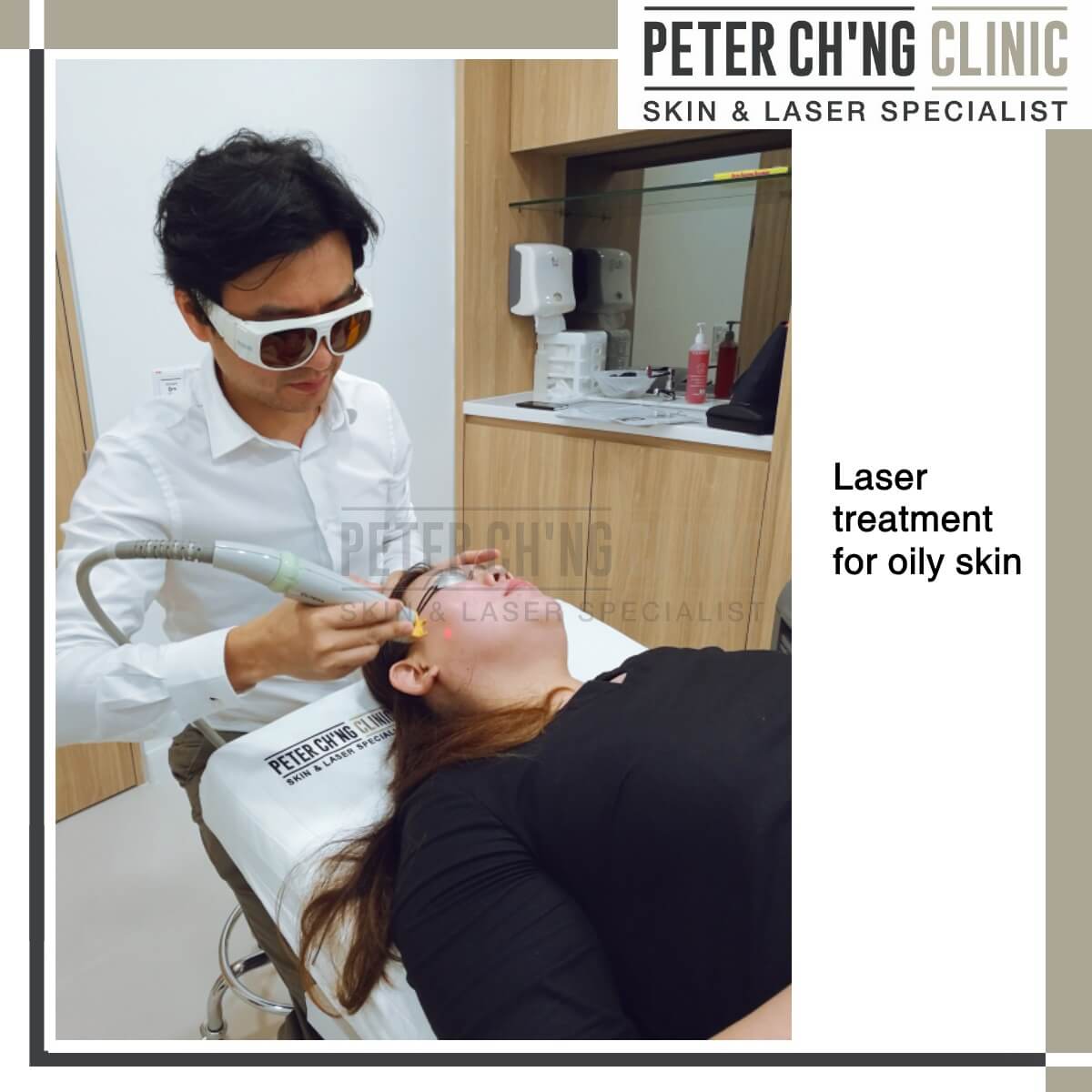
Laser treatments are also effective in treating acne caused by oily skin. When there’s acne on your face, there’s bacteria. And these bacteria has pigments.
Using the laser, these pigments of the bacteria absorb the light of the laser. The light heats up the bacteria, and ends up killing the bacteria.
Besides, this bacteria is found in the oil gland, so by heating up and killing the bacteria, you can also reduce the oiliness of your gland, and subsequently shrink the size of the gland. In other words, oily skin can be treated as well.
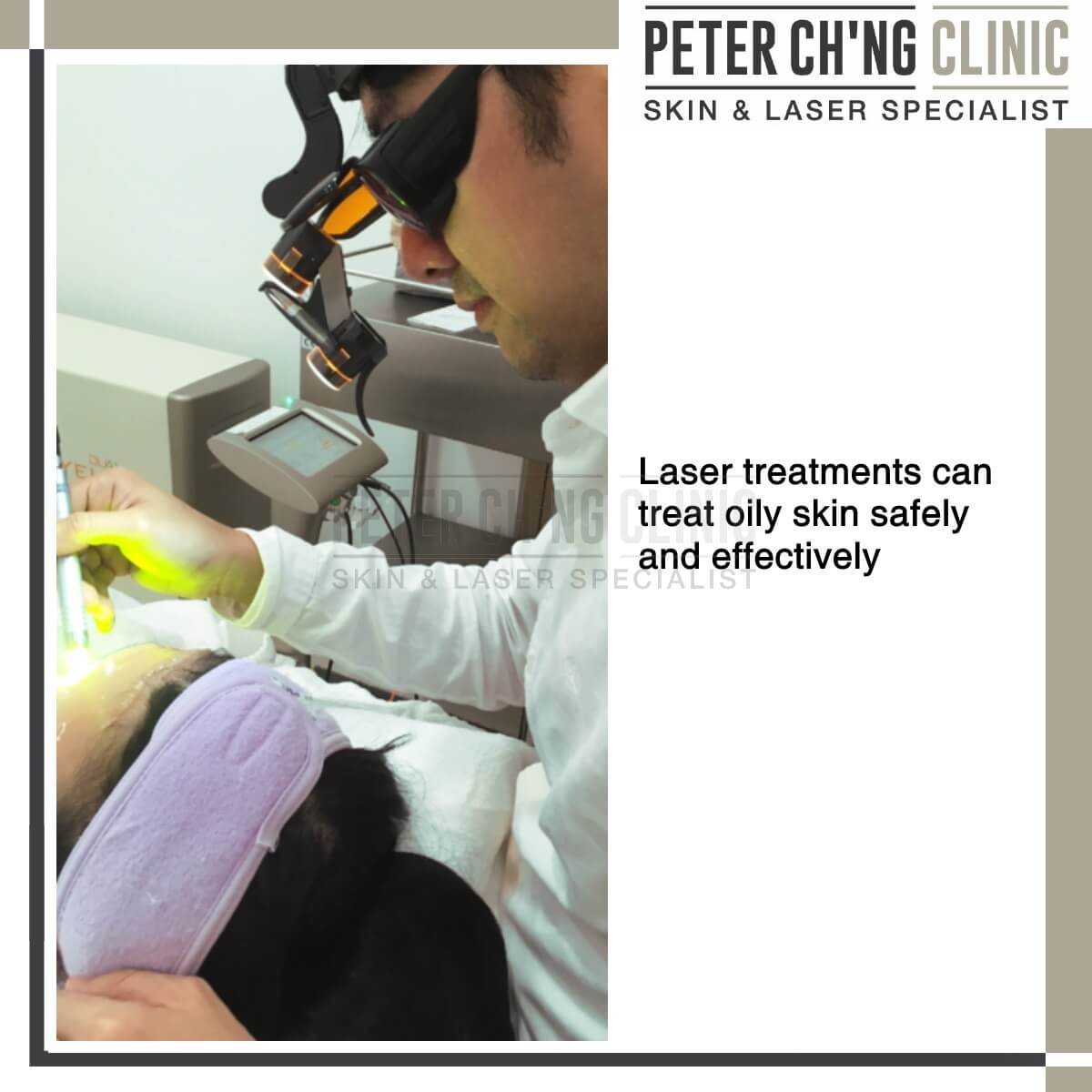
With proper treatments from a certified skin specialist doctor, you can expect a reduction in oily skin and acne as well as in improved skin condition within 1 month. However, treatment shouldn’t be stopped abruptly upon skin improvement, but tapered down with the advice of the skin specialist based on the current condition.
Oily skin is annoying, and can be long lasting. But does it need to last forever? With the right treatment, it doesn’t have to.
Look out for next week’s entry as we look at some oily skin problems that you can relate to!
Cheers.
*Editor’s note: As an esteemed dermatologist and skin specialist, Dr Peter is a renowned doctor in treating various skin conditions. He also prides himself in being able to treat acne patients of all types, with a 100% acne treatment success record. If you’d like to ask more about your skin condition or have a discussion with Dr Peter, call us at +6011-22882299, WhatsApp us here, or book an appointment with Dr Peter here!

If you’d like to ask more about your skin condition or have a discussion with Dr Peter, you can contact us at +6011-22882299, Whatsapp us, or book an appointment with Dr Peter here!
Treatments mentioned in this article :
Laser Treatments for Acne and Acne Scars
Laser treatments can reduce inflammation, as the laser light is absorbed by the haemoglobin (our red blood cells), and is useful for treating inflammatory acne.
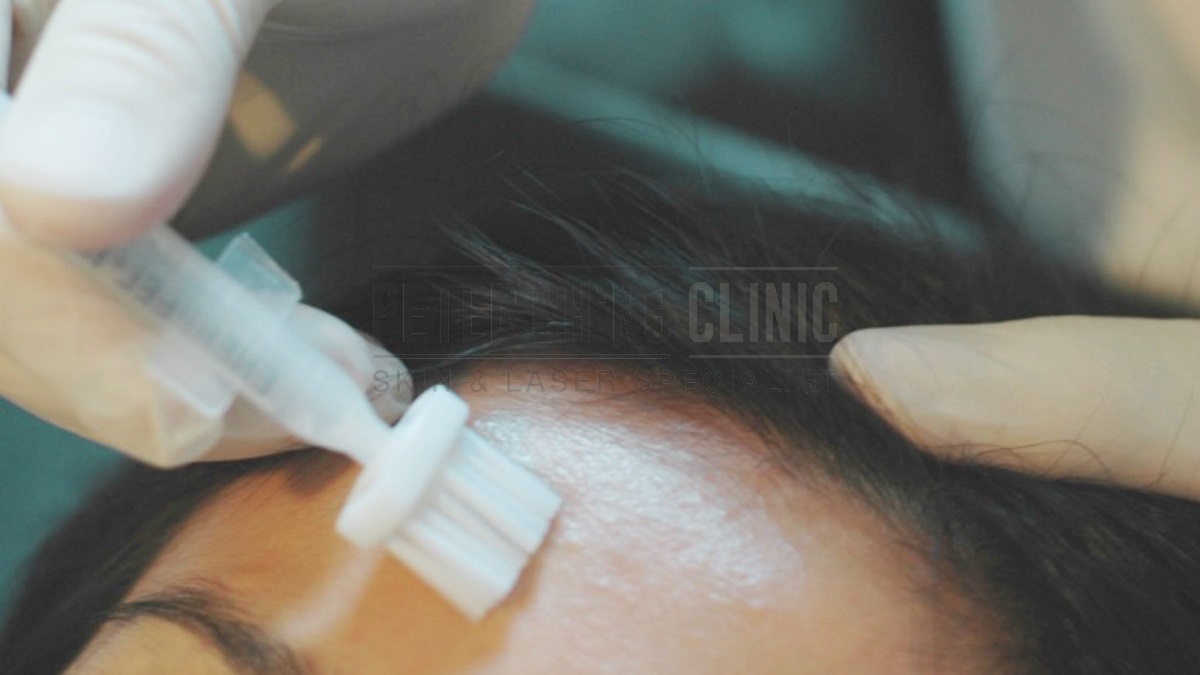
Chemical Peel
Chemical peels are acids that are applied on the skin to cause the skin to peel. This process stimulates the skin cells to regenerate faster and thus fastening the process of skin healing.
